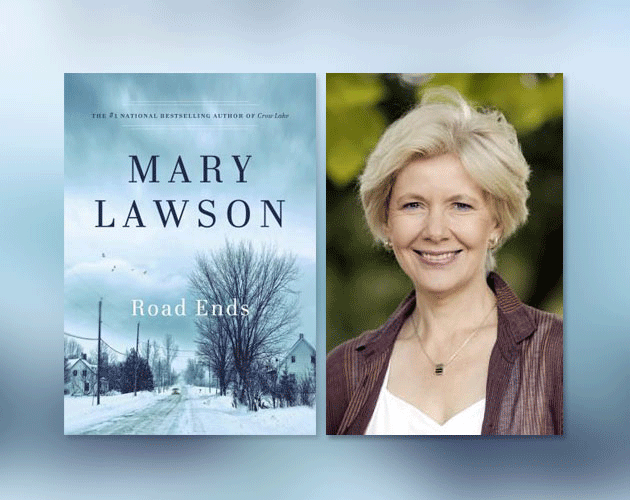Five Questions for Mary Lawson

Mary Lawson was 56 when she published her first novel, Crow Lake, in 2002. That book went on to be published in 22 countries, with positive reviews from such esteemed publications as The New York Times and The Guardian. Her second novel The Other Side of the Bridge also drew a devoted readership. Like her previous books, Road Ends deals with the life within families and the push and pull between responsibility and individual desire. Zoomer talked with Lawson about her inspirations, the draw of Northern Ontario, and life as a writer.
Athena McKenzie: Fans of Crow Lake will be happy to see members of the Morrison family. When did you know that you wanted to return to them?
Mary Lawson: I was very much in love with the Morrison family, I must say, and in particular with Bo, who is based on my younger sister’s infancy. She’s the only character in any of my books who is based on a real person. And I asked her if I could use her because I needed a horrendous baby and it seemed to me that she filled the bill. I loved writing about Bo and I thought that she would continue to be an interesting character as she grew up (although not like my sister) and it would be fun to bring her back in. I tried to do so in The Other Side of the Bridge but she took over everything I put her in, so it wasn’t working. Then I realized when I got part way through Road Ends that there was in fact a use for Bo here. It worked out that she would be 15 or 16 at the time (I have the dates when everybody was born in the previous books) so I brought her in and I brought Luke in because I could see that they both would have a role.
AM: Sibling relationships seem to form the core of your novels. What is the draw?
ML: Everyone has a family and your relationships with them may be bad or may be good, but the dynamics within families just fascinate me. I look at the generations of my own family, my sons and my grandsons, and I just think that there is such scope for story-telling, without ever having to leave the walls of a single house. There’s so much that goes on between siblings and it is an incredibly important relationship in anybody’s life. I guess it’s my main area of interest: families and their relationships and how you break away from your family or your failure to do so; the expectations that you all have of each other and then, as you get older, your perceptions of those expectations change as you mature and you begin to realize that the people you grew up with aren’t still the children that you grew up with. I think all of that is quite fun to write about.
AM: Your setting of Northern Ontario is almost another character in the book. I’ve heard that some authors carry certain landscapes with them through life — is this how you feel about the Canadian Shield?
ML: Absolutely. Northern Ontario remains my favourite landscape in the world. I have never really stopped missing it. I set Crow Lake there purely for reasons of homesickness. I grew up in Southern Ontario but we had a family cottage (which has been in the family now for generations) and when I think of home that’s what I think of. I just love the landscape of the Canadian Shield. It is such a powerful landscape. So hostile, that to live up there takes great courage and fortitude, if you think of the people that originally settled up there. The demands it makes on people are just enormous and I think people become very closely attached to it and identify with it. I think growing up on the Shield must have been really something.
AM: Where did this story start for you?
ML: It was two years after I wrote The Other Side of the Bridge before I got an idea; and I nearly went nuts because I just couldn’t think of anything. And then I was on a book tour in Norway and had an afternoon off, so I went to the art gallery in Oslo and they have a room there dedicated to the work of Edward Munch. There are a number of different versions of The Scream in this room and beside one of them there was a plaque that said that the screamer’s companions at the far end of the bridge “appeared to be unaware of his anguish.” Those words really struck me. I’d never noticed his companions before but they’re there alright. Supposing that the screamer jumped? What would the effect be on these friends? I started with the idea of a guy in his late teens, early 20s, with a very close friend and that friend virtually commits suicide in front of him. What does that do to a person? And I just worked from there.
AM: You said it took a long time to find an idea for this novel. Are you working on anything now?
ML: My problem has always been ideas. I started writing short stories when my kids went to school because we needed the money and I didn’t want to go back to work full-time and there wasn’t part-time work available. The only place that paid you properly was women’s magazines, so I wrote for them. But it very quickly became evident to me that if you’re going to make money from short stories, you need to write fast and you need to write lots. And I just couldn’t get enough ideas. So, at the moment, I’m out of ideas and I’m waiting for something else to hit me and I certainly hope it doesn’t take two years to do so!